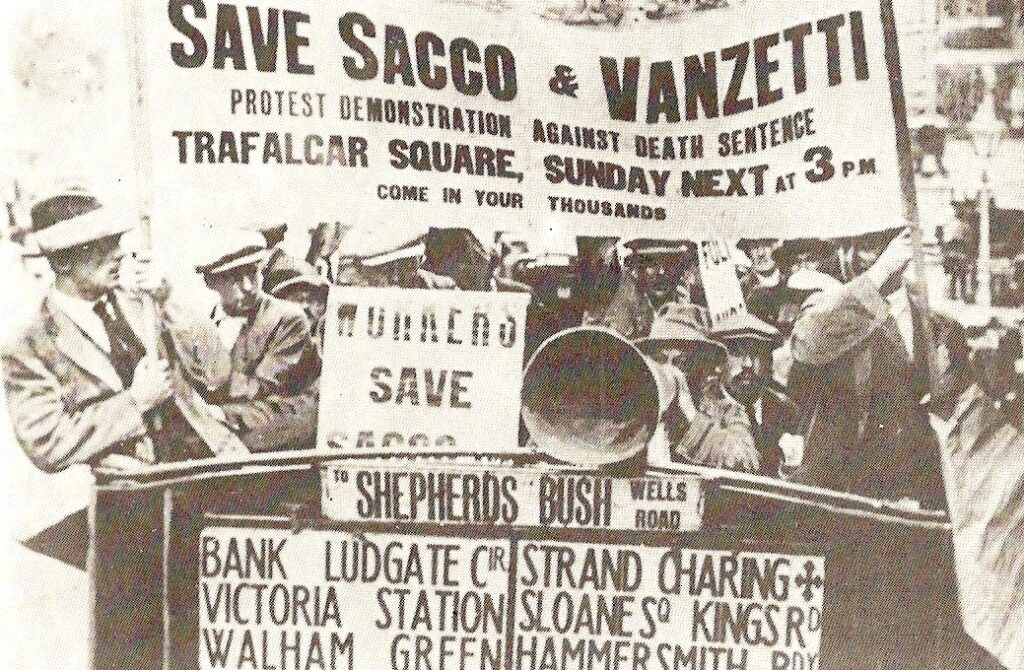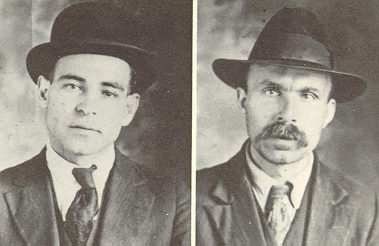Bartolomeo Vanzetti (left) and Nicola Sacco (right)
On this day in 1927, Italian-born anarchists Nicola Sacco and Bartolomeo Vanzetti were executed by electric chair after being controversially convicted of murder in one of the most polarizing legal cases of the early 20th century. Their trial and subsequent execution sparked worldwide protests and debates, centering on issues of anti-immigrant sentiment, political bias, and the fairness of the American justice system.
The story began on April 15, 1920, in South Braintree, Massachusetts, when a paymaster for the Slater and Morrill Shoe Company, along with his guard, was shot and killed during a robbery. Witnesses described the assailants as two Italian men who escaped with more than $15,000. Sacco and Vanzetti were arrested weeks later when they went to claim a car allegedly linked to the crime. Both men were armed and gave false statements to the police but had no prior criminal records. Despite questionable evidence, they were convicted on July 14, 1921, and sentenced to death.
At the time, anti-radical and anti-immigrant sentiments were pervasive in America, which many believed tainted the trial. Sacco and Vanzetti were known followers of Luigi Galleani, an Italian anarchist advocating revolutionary violence. The prosecution painted them not just as criminals but as dangerous radicals. The evidence against them was shaky at best. The police never found the stolen money, and some of the forensic evidence presented at trial was later discredited. However, despite a confession from another man, Celestino Madeiros, who claimed he was involved in the robbery with a different gang, all appeals for a retrial were denied.
As their case gained international attention, protests erupted across the globe, with notable figures including writers, artists, and academics advocating for their release or at least a new trial. Even Harvard law professor Felix Frankfurter and Italian dictator Benito Mussolini weighed in, arguing for their innocence. The public outcry grew so intense that Massachusetts Governor Alvan T. Fuller appointed a commission to investigate the case. Despite this, the commission upheld the original verdict, and Sacco and Vanzetti were executed on August 23, 1927.

The impact of their execution was profound. The belief that Sacco and Vanzetti had been wrongfully convicted due to their political beliefs and immigrant status persisted for decades. Investigations into the case continued into the 1930s and 1940s, with the publication of letters they wrote from prison bolstering the case for their innocence. In 1961, a ballistic test confirmed that the gun found on Sacco had indeed been used to kill one of the guards, though this did little to quell doubts about the overall fairness of the trial.
On the 50th anniversary of their execution, Massachusetts Governor Michael Dukakis issued a proclamation stating that Sacco and Vanzetti had been unjustly tried and convicted and that any disgrace associated with their names should be removed. This act of symbolic vindication came too late for Sacco and Vanzetti, but it underscored the enduring legacy of a case that highlighted the dangers of prejudice within the legal system.
The lives of Sacco and Vanzetti had been shaped by their immigrant experience and their radical political beliefs. Sacco, born on April 22, 1891, in Torremaggiore, Italy, was a shoemaker and night watchman who emigrated to the United States at seventeen. Vanzetti, born on June 11, 1888, in Villafalletto, Italy, worked as a fishmonger. Both men left Italy in 1908 and met during a strike in 1917, bonding over their shared commitment to anarchism. They became part of a community of Italian immigrants in America who faced significant prejudice and were often targeted by authorities for their political beliefs.
Their association with Galleani placed them under the suspicion of the U.S. government, which had been cracking down on radical activities, particularly following a series of bombings attributed to Galleanist anarchists. The fear and suspicion of foreign radicals, coupled with the anti-Italian sentiment of the era, heavily influenced the public and judicial perception of Sacco and Vanzetti.
The trial itself was marred by bias and irregularities. The presiding judge, Webster Thayer, was known for his anti-immigrant views and had openly expressed hostility towards anarchists. Despite a weak prosecution case that relied on conflicting eyewitness testimony and dubious forensic evidence, Sacco and Vanzetti were convicted, with the jury likely swayed by the prevailing anti-immigrant and anti-anarchist sentiment.










